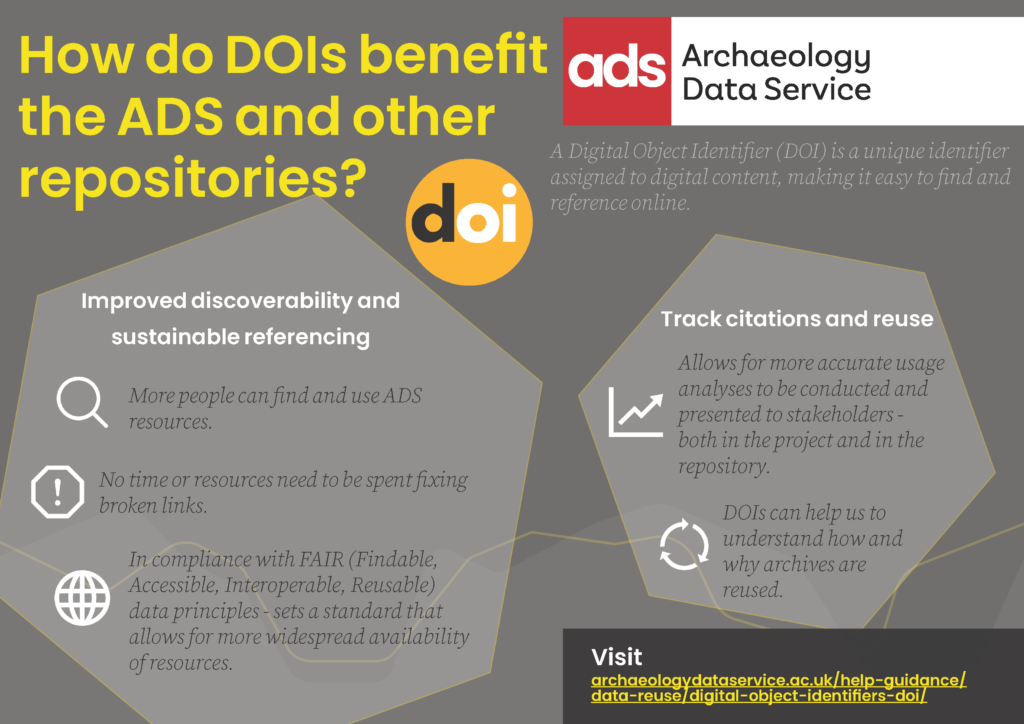How do DOIs benefit the ADS and other repositories? – Archaeology Data Service (original) (raw)
All resources archived with the ADS are Open Access and delivered through our website to facilitate re-use by the heritage sector and wider community. But how do we know that resources within an archive are being used? The ADS generates statistics on page views and downloads for each collection, however this data only provides a limited snapshot of the scope of archive reuse. While these metrics can indicate trends in popularity, they cannot tell us who is accessing these resources and why, and whether they are being used in other research projects. This is where Digital Object Identifiers come in.
A Digital Object Identifier (DOI) is a unique and persistent identifier assigned to digital content so that it can be consistently and accurately referenced. The ADS provides a DOI for each of the collections and publications deposited with us.
Using a range of tools, we can identify where our DOIs are being used. One such tool is the DataCite REST API: an interface to retrieve and update DOI metadata, including citations of DataCite DOIs quoted as sources in academic papers. The ADS also uses this API to facilitate version control so that changes to resources can be tracked over time. In addition, there is the incredibly powerful Cited-by service from Crossref, a set of APIs that captures and records events that occur all over the web. This includes not only published articles but also X/Twitter and Wikipedia (including WikiData). Capturing this sort of reuse, and mentions in conversations on social media is a glimpse into the sort of conversations people may be having about our digital objects and what they are being reused for.
Archives are designed to preserve resources for future generations. While digital resources appear to be perpetual, the consistent advancement of technology continues to shorten the time to obsolescence. For instance, the update to the ADS website in 2023 rendered some of the URLs linking to our site obsolete. The ADS archive and library have yet to be completely reconfigured to become stylistically consistent with the website, however, the findability of resources in these channels will be less impacted if the DOIs are referenced more frequently than URLs. DOIs provide a stable way for our users to cite our collections, which ultimately enhances scholarly communication and attribution.
Repositories like the ADS depend on the existence of DOIs not only to make the collections we hold accessible, but also to help gather evidence of their usefulness. Stakeholders, including depositors and project funders, can see the impact of their data and how it has influenced related research.
Overall, citing the DOI rather than the URL will allow for more people to access and reuse ADS resources. Not only does this benefit us as a repository by increasing our visibility, but it also allows for more efficiency in sharing information and expanding existing knowledge.
